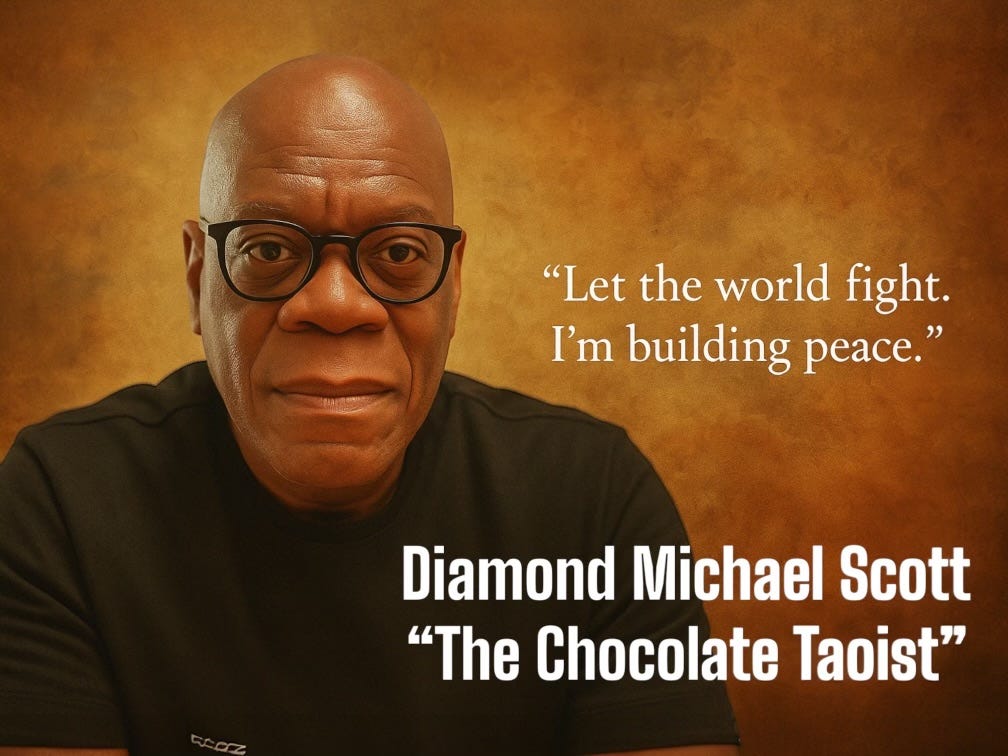The Warring States Period of China (475–221 BCE) was one of the most violent, intellectually fertile, and politically complex eras in human history.
It was a time when seven major states—Qi, Chu, Yan, Han, Zhao, Wei, and Qin—vied for dominance in a fracturing land, each waging war with brutal ambition, desperate for supremacy. Yet, amid the bloodshed and chaos, something else emerged: a golden age of philosophy.
Confucianism matured. Legalism gained teeth. Mohism flickered. And in the quiet of the mountains, Taoism—rooted in the Tao Te Ching and the mystic insights of Laozi and Zhuangzi—whispered a different kind of power.
Studying this volatile period as a Chocolate man navigating the fractured terrain of today’s world—racially, politically, economically—I find eerie parallels and, more importantly, transcendent lessons.
The Warring States weren’t just fighting for land. They were fighting for identity. Each region had its own way of life, its own stories, its own path toward harmony—or conquest. The divisions between them mirror the fractured consciousness we face today: red states vs. blue states, Black vs. white, rich vs. poor, truth vs. illusion. We are, in some sense, always in a Warring States Period. And so the question becomes: How do we live through it without becoming it?
This is where Taoist inner alchemy becomes my medicine.
Unlike the Legalists who believed in strict control and heavy punishment, or even the Confucians who sought social order through ritual and hierarchy, Taoist sages during the Warring States offered a radical response to the chaos which was to withdraw, observe, transform from within. Rather than change the world by force, change yourself by aligning with the Tao—the Way.
As a Chocolate man in America, I don’t have the luxury of being oblivious to conflict. The divisions often show up in my skin before they ever touch my mind. But what Taoism and the Warring States themselves teach me is that external chaos doesn’t have to become internal fragmentation.
Instead, I can practice a kind of energetic wu wei—not passive inaction, but active non-resistance. I don’t fight every injustice by charging into battle like a Qin general. I work my inner qi, I refine my spirit, I become the uncarved block. I transmute the heat of rage into the light of clarity.
The I Ching offers guidance here, not as fortune-telling but as pattern recognition. During the Warring States, it evolved from a divination tool into a deeply philosophical map of change. Three hexagrams in particular speak to me:
Hexagram 6 – Conflict (Song): It teaches that conflict, when approached without clarity or humility, leads to loss. But when you understand its root—usually misunderstanding or ego—you can avoid entanglement and see the greater pattern.
Hexagram 59 – Dispersion (Huan): It reminds me that when things are breaking apart—socially, emotionally—what’s needed is not more pressure, but release. In other words, let go of rigid identities. Let the energy disperse, then reunify in a higher form.
Hexagram 49 – Revolution (Ge): True revolution begins not with war, but with inner transformation. It’s the revolution of shedding old skins, becoming new without force, letting truth emerge naturally from the compost of the past.
From the shattered states of ancient China, the mighty Qin Dynasty would arise. From suffering, something unified was born. But the Taoist lesson is this: real unification is not dominance. It’s resonance. And resonance begins inside.
In this way, I can be like the quiet sages who saw the madness around them but chose not to add to it. They cultivated gardens of qi while kingdoms burned. They knew the deepest war is the one between the heart and the world—and that winning it means not letting the world win your heart.
So, as I read history not as an outsider, but as a spiritual brother to Laozi, I see a new path. I can be both Chocolate and Taoist. I can be of this world and not enslaved by it. I can carry the fire of my people and the stillness of the Tao. I can be—like the Warring States themselves—broken open to something greater.
Let the world fight. I’m building peace.
If the Daily Chocolate Taoist nomadic wisdom lights up your day, fuels your mind, or gives you a fresh perspective, I’d love your support as a paid member!
Or, if you’re feeling generous, drop a little (or a lot) of dirty chai latte love my way—every bit helps keep this Taoist journey flowing.
I’m committed to delivering high-quality, thought-provoking features straight to your inbox—no paywalls, no fluff, just raw, unfiltered wisdom on what it means to be human in today’s paradoxical, mysterious, and uncertain world.
Your support fuels my full-time mission, and I appreciate every single contribution. Let’s keep this energy going!
Diamond Michael Scott
aka The Chocolate Taoist





"Rather than change the world by force, change yourself by aligning with the Tao—the Way."
Your post today reminded my of the teaching of the apostle Paul. To be in the world but not of it. The Tao has many parallels with the Way of Jesus. Truth is always truth wherever it crops up.
You've illustrated several pieces now with your face as primary image, set in some expression showing emotion appropriate to the piece. These have been very good pictures. I can wish for a mosaic of these portraits to grace the cover of your book--I suppose they would be relegated to the back--I think potential readers would be attracted.